Get free scan and check if your device is infected.
Remove it nowTo use full-featured product, you have to purchase a license for Combo Cleaner. Seven days free trial available. Combo Cleaner is owned and operated by RCS LT, the parent company of PCRisk.com.
What kind of malware is MonsterV2?
MonsterV2 is promoted as a remote access trojan (RAT), information stealer, and malware loader. It is developed using C++, Go, and TypeScript. can carry out multiple actions while present on the infiltrated device. It is known that is MonsterV2 operating primarily as either a stealer or a malware loader.
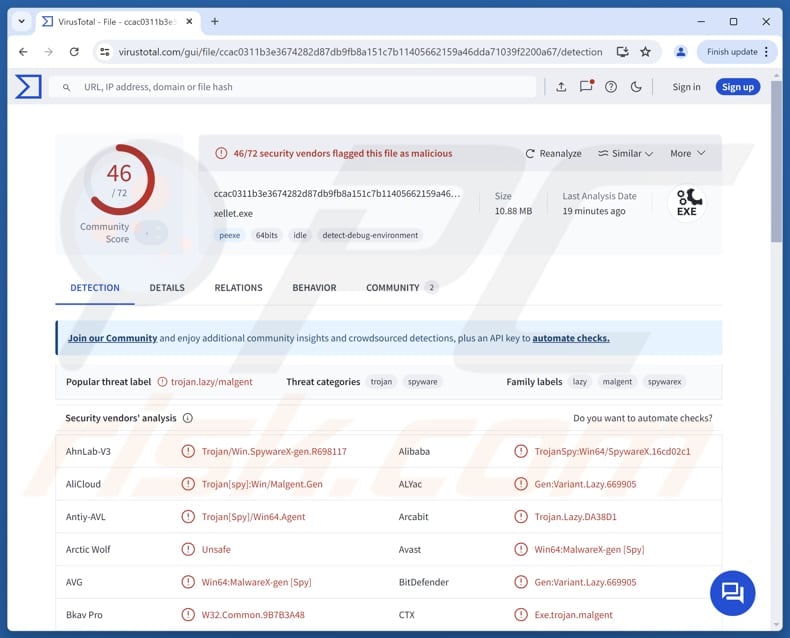
More about MonsterV2
The malware is configured not to infect systems in certain countries, such as Armenia, Belarus, Estonia, Kazakhstan, Kyrgyzstan, Latvia, Lithuania, Moldova, Russia, Tajikistan, Turkmenistan, Ukraine, and Uzbekistan. Once inside, it can perform various malicious activities.
MonsterV2 can monitor the system clipboard and replace cryptocurrency addresses copied by the user with addresses controlled by cybercriminals. If the victim does not notice these changes and makes a transaction, cryptocurrency is sent to threat actors.
MonsterV2 can also download and execute additional payloads, including ransomware, information stealers, other RATs, cryptocurrency miners, and other types of malware. Stealc_v2 and Remcos RAT are a couple of known examples delivered using MonsterV2.
Furthermore, the malware can steal data such as browser data, login credentials, credit card and crypto wallet information, service tokens (e.g., Steam, Telegram, Discord), files, documents, and other information. Its information-stealing capabilities also involve using a keylogger that records everything the victim types.
Another capability is running a remote desktop connection that lets the attacker see and control the infected system's graphical user interface. The malware communicates with its command-and-control server and can accept and run a wide range of commands sent by cybercriminals, including Command Prompt and PowerShell commands.
Moreover, MonsterV2 can capture the screen and record video using the infected device's webcam, shut down or crash the infected system, terminate processes (including its own), and delete its files. MonsterV2 is sold through subscriptions: one week, two weeks, or one month.
The Standard version costs $800 per month, while the Enterprise version costs $2,000 per month and includes extra tools such as a stealer, loader, HVNC, and HCDP. It is important to note that MonsterV2 is often packed with SonicCrypt crypter, a tool that can be used to add files to startup, bypass UAC, customize icons, add files to Windows Defender's exceptions list, and more.
| Name | MonsterV2 RAT |
| Threat Type | RAT, Information Stealer, Malware Loader |
| Detection Names | Avast (Win64:MalwareX-gen [Spy]), Combo Cleaner (Gen:Variant.Lazy.669905), ESET-NOD32 (A Variant Of Win64/Spy.Agent.NJ), Kaspersky (Trojan-PSW.Win32.Lumma.lfe), Microsoft (Trojan:Win32/Malgent!MSR), Full List (VirusTotal) |
| Symptoms | RATs are designed to stealthily infiltrate the victim's computer and remain silent, and thus no particular symptoms are clearly visible on an infected machine. |
| Possible distribution methods | Deceptive emails, compromised websites, social engineering, ClickFix. |
| Damage | Stolen passwords and banking information, identity theft, the victim's computer added to a botnet, additional infections, monetary loss, account hijacking, system damage. |
| Malware Removal (Windows) |
To eliminate possible malware infections, scan your computer with legitimate antivirus software. Our security researchers recommend using Combo Cleaner. Download Combo CleanerTo use full-featured product, you have to purchase a license for Combo Cleaner. 7 days free trial available. Combo Cleaner is owned and operated by RCS LT, the parent company of PCRisk.com. |
Conclusion
In conclusion, victims of MonsterV2 can face serious consequences, including theft of personal and financial information, loss of cryptocurrency, system compromise, execution of additional malware, and disruption or damage to their devices. Its capabilities make it a highly dangerous threat to both individuals and organizations.
More examples of malware classified as a RAT are SilentSync, ZynorRAT, and kkRAT.
How did MonsterV2 infiltrate my computer?
Cybercriminals have been observed delivering MonsterV2 in various ways. It is known that earlier, the malware was delivered using messages (supposedly from government agencies) containing PDFs that directed users to webpages designed to trick users into running malicious PowerShell commands using a ClickFix technique.
Legitimate websites that have been compromised with malicious JavaScript are also used. The injected script shows a fake CAPTCHA overlay that tells the user to run Win+R/PowerShell; if the user follows the instructions, a PowerShell command is executed that downloads and runs the malware.
MonsterV2 has also been delivered via GitHub-themed emails. Attackers create fake security notices in repositories they control and tag legitimate users, who then receive notification emails with links to malicious websites. Following the links can initiate malware downloads, similar to the ClickFix method.
How to avoid installation of malware?
Always keep your operating system and applications up to date. Use reputable security software and perform regular scans to identify potential threats. Be careful with unexpected emails or messages, especially those containing links or attachments from unknown sources. Only download software or files from official websites or trusted app stores.
Avoid clicking on suspicious ads or pop-ups, and do not allow untrustworthy websites to send notifications. If you believe that your computer is already infected, we recommend running a scan with Combo Cleaner Antivirus for Windows to automatically eliminate infiltrated malware.
Bogus PDF leading to ClickFix delivery method (source: proofpoint.com):
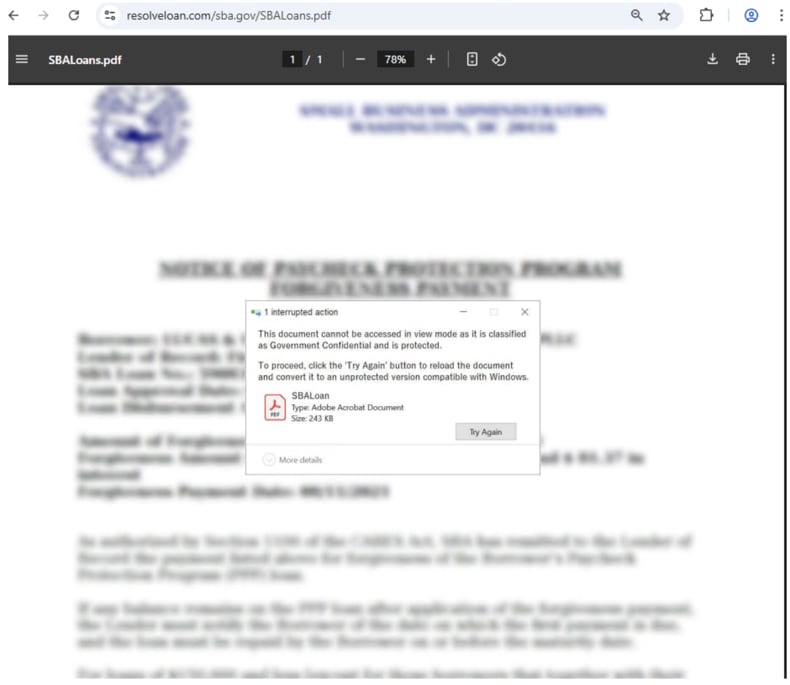
Instructions (ClickFix technique) on a fake document leading to the execution of the MonsterV2 malware (source: proofpoint.com):
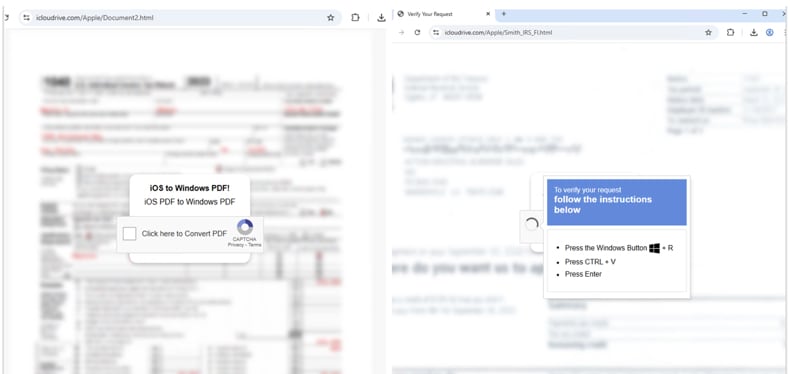
Instant automatic malware removal:
Manual threat removal might be a lengthy and complicated process that requires advanced IT skills. Combo Cleaner is a professional automatic malware removal tool that is recommended to get rid of malware. Download it by clicking the button below:
DOWNLOAD Combo CleanerBy downloading any software listed on this website you agree to our Privacy Policy and Terms of Use. To use full-featured product, you have to purchase a license for Combo Cleaner. 7 days free trial available. Combo Cleaner is owned and operated by RCS LT, the parent company of PCRisk.com.
Quick menu:
- What is MonsterV2?
- STEP 1. Manual removal of MonsterV2 malware.
- STEP 2. Check if your computer is clean.
How to remove malware manually?
Manual malware removal is a complicated task - usually it is best to allow antivirus or anti-malware programs to do this automatically. To remove this malware we recommend using Combo Cleaner Antivirus for Windows.
If you wish to remove malware manually, the first step is to identify the name of the malware that you are trying to remove. Here is an example of a suspicious program running on a user's computer:
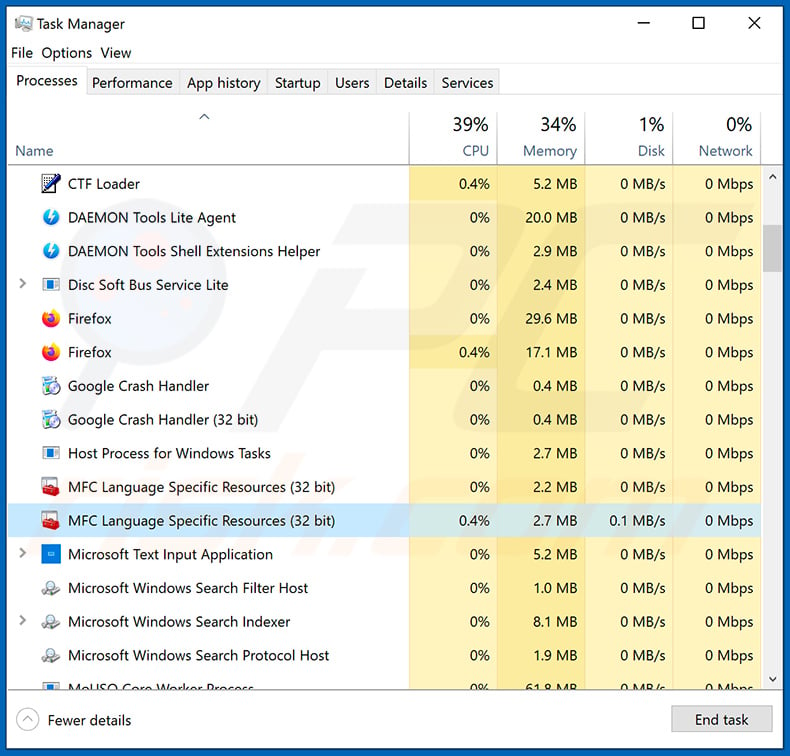
If you checked the list of programs running on your computer, for example, using task manager, and identified a program that looks suspicious, you should continue with these steps:
 Download a program called Autoruns. This program shows auto-start applications, Registry, and file system locations:
Download a program called Autoruns. This program shows auto-start applications, Registry, and file system locations:
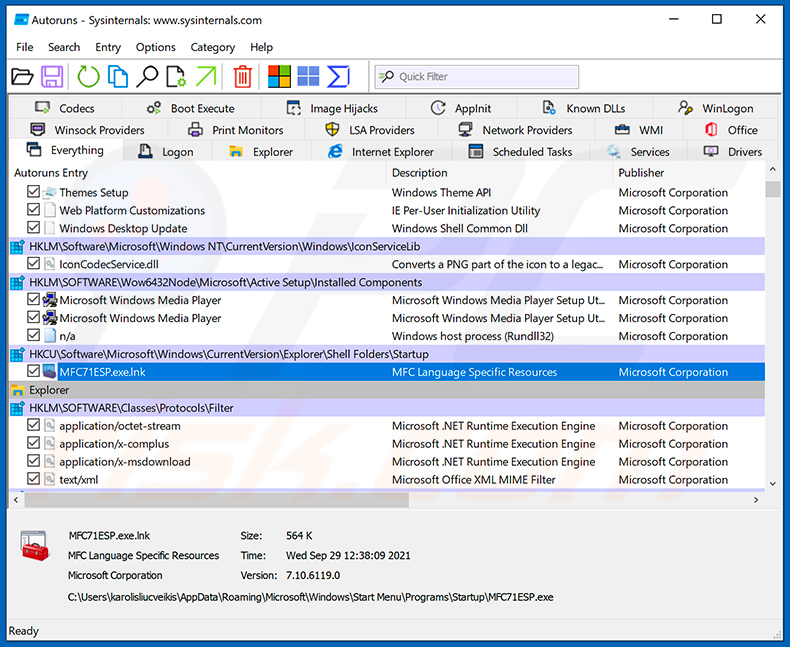
 Restart your computer into Safe Mode:
Restart your computer into Safe Mode:
Windows XP and Windows 7 users: Start your computer in Safe Mode. Click Start, click Shut Down, click Restart, click OK. During your computer start process, press the F8 key on your keyboard multiple times until you see the Windows Advanced Option menu, and then select Safe Mode with Networking from the list.
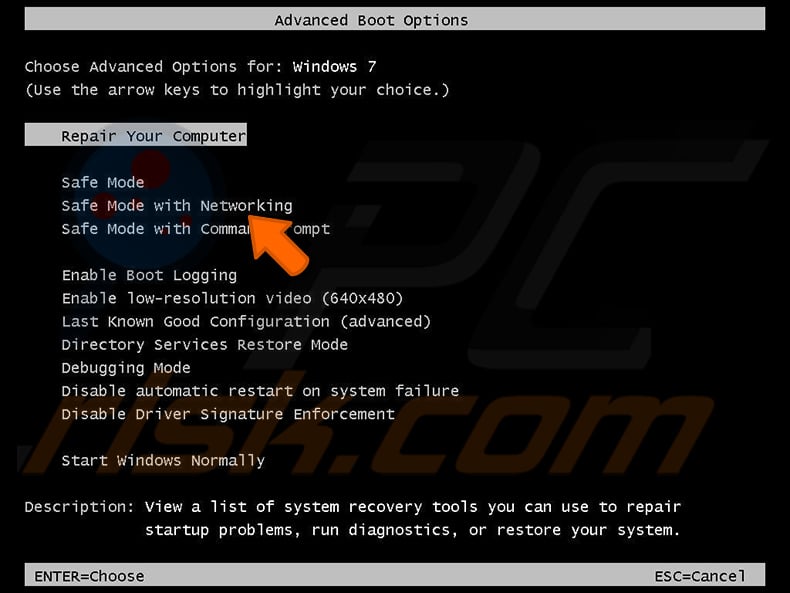
Video showing how to start Windows 7 in "Safe Mode with Networking":
Windows 8 users: Start Windows 8 is Safe Mode with Networking - Go to Windows 8 Start Screen, type Advanced, in the search results select Settings. Click Advanced startup options, in the opened "General PC Settings" window, select Advanced startup.
Click the "Restart now" button. Your computer will now restart into the "Advanced Startup options menu". Click the "Troubleshoot" button, and then click the "Advanced options" button. In the advanced option screen, click "Startup settings".
Click the "Restart" button. Your PC will restart into the Startup Settings screen. Press F5 to boot in Safe Mode with Networking.
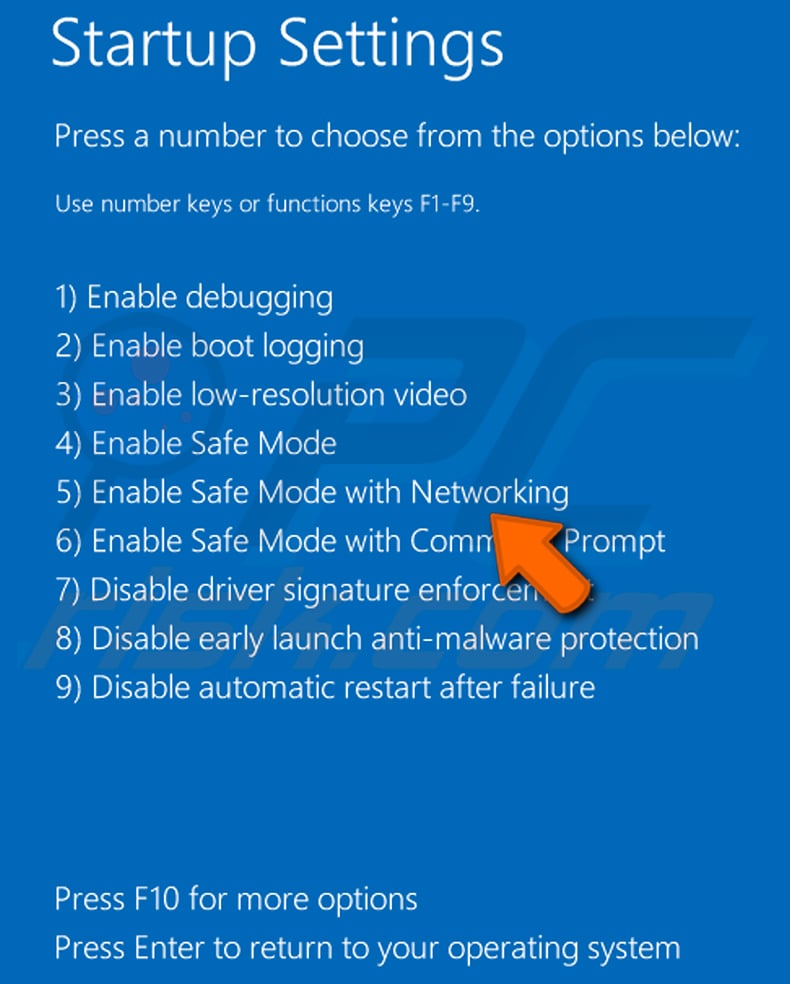
Video showing how to start Windows 8 in "Safe Mode with Networking":
Windows 10 users: Click the Windows logo and select the Power icon. In the opened menu click "Restart" while holding "Shift" button on your keyboard. In the "choose an option" window click on the "Troubleshoot", next select "Advanced options".
In the advanced options menu select "Startup Settings" and click on the "Restart" button. In the following window you should click the "F5" button on your keyboard. This will restart your operating system in safe mode with networking.
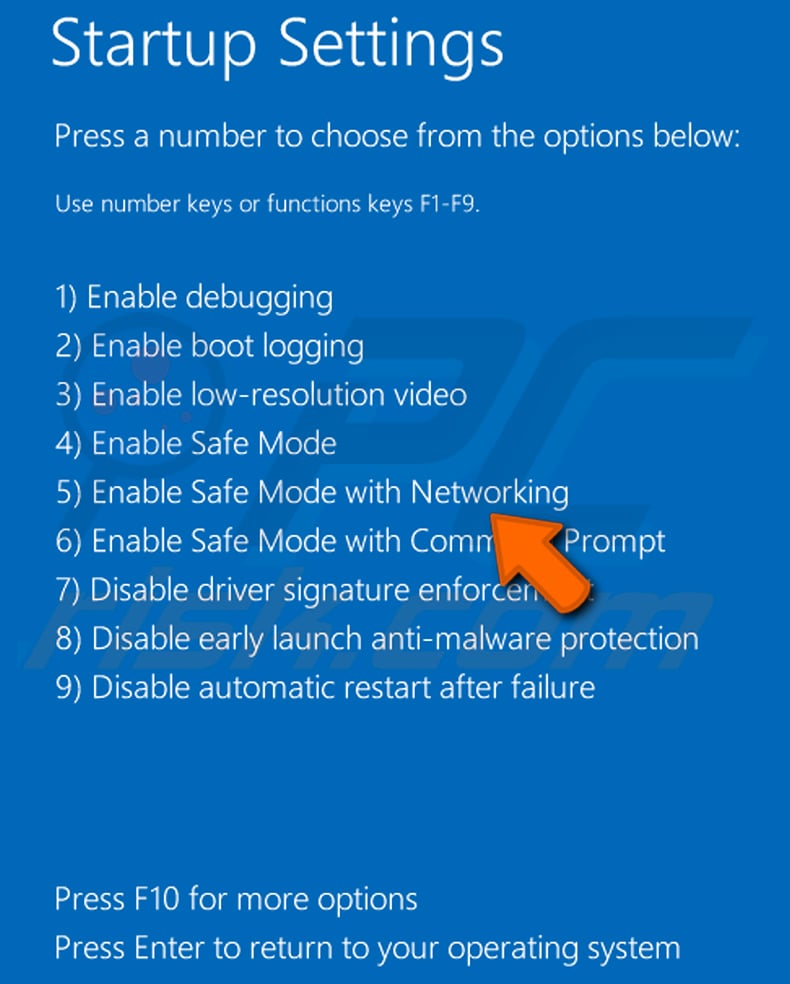
Video showing how to start Windows 10 in "Safe Mode with Networking":
 Extract the downloaded archive and run the Autoruns.exe file.
Extract the downloaded archive and run the Autoruns.exe file.
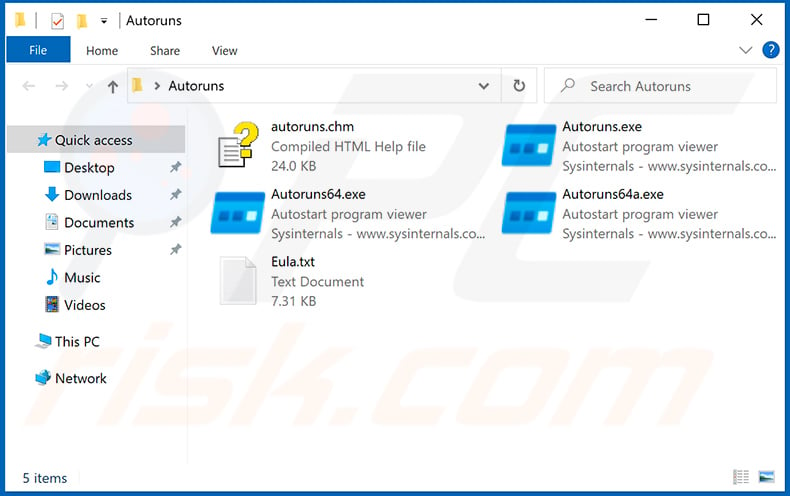
 In the Autoruns application, click "Options" at the top and uncheck "Hide Empty Locations" and "Hide Windows Entries" options. After this procedure, click the "Refresh" icon.
In the Autoruns application, click "Options" at the top and uncheck "Hide Empty Locations" and "Hide Windows Entries" options. After this procedure, click the "Refresh" icon.
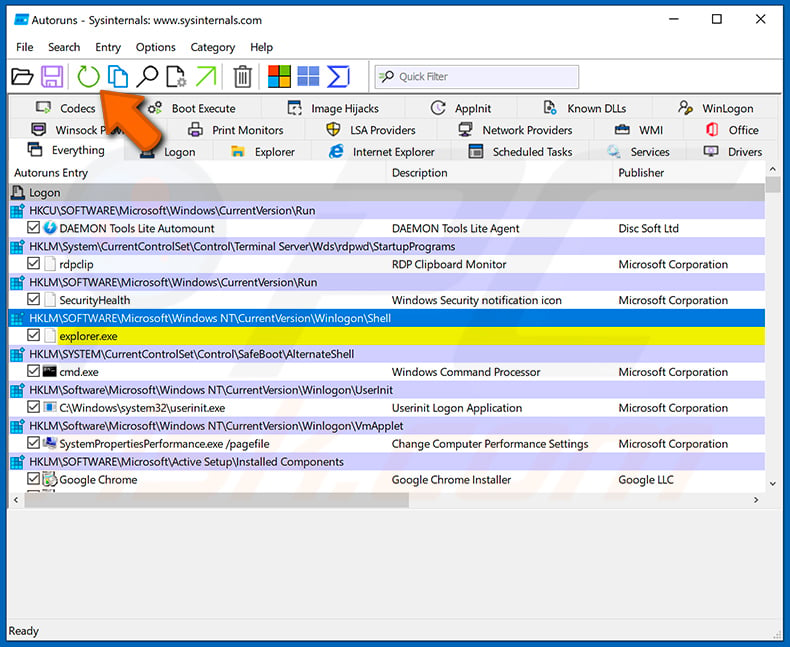
 Check the list provided by the Autoruns application and locate the malware file that you want to eliminate.
Check the list provided by the Autoruns application and locate the malware file that you want to eliminate.
You should write down its full path and name. Note that some malware hides process names under legitimate Windows process names. At this stage, it is very important to avoid removing system files. After you locate the suspicious program you wish to remove, right click your mouse over its name and choose "Delete".
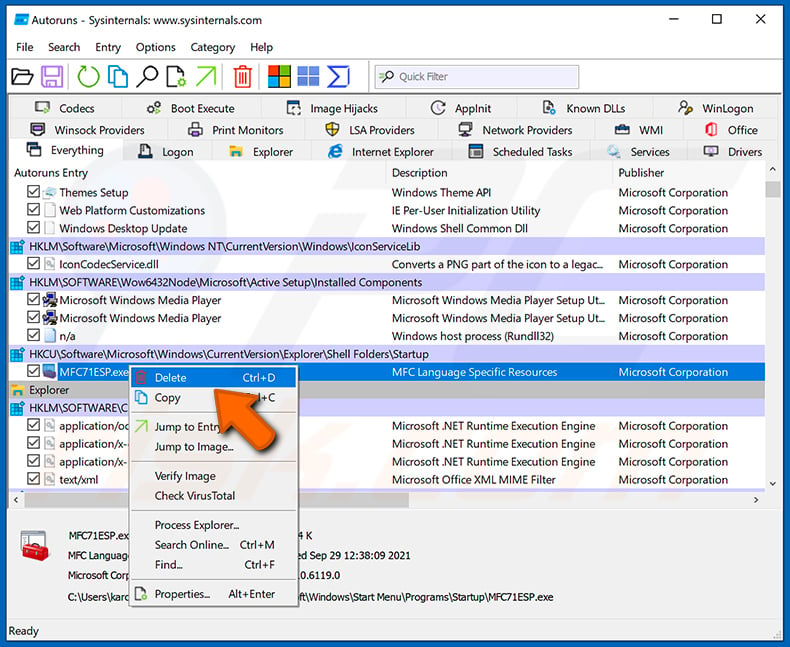
After removing the malware through the Autoruns application (this ensures that the malware will not run automatically on the next system startup), you should search for the malware name on your computer. Be sure to enable hidden files and folders before proceeding. If you find the filename of the malware, be sure to remove it.
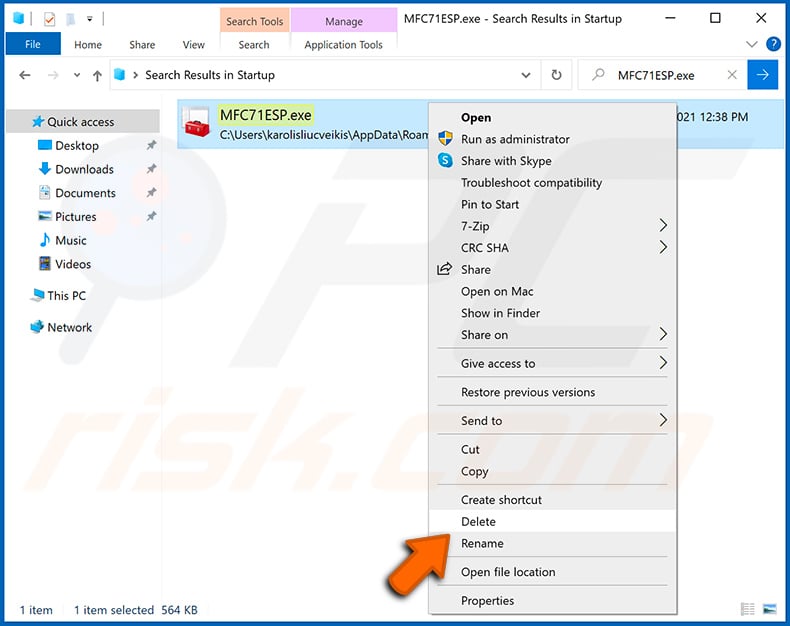
Reboot your computer in normal mode. Following these steps should remove any malware from your computer. Note that manual threat removal requires advanced computer skills. If you do not have these skills, leave malware removal to antivirus and anti-malware programs.
These steps might not work with advanced malware infections. As always it is best to prevent infection than try to remove malware later. To keep your computer safe, install the latest operating system updates and use antivirus software. To be sure your computer is free of malware infections, we recommend scanning it with Combo Cleaner Antivirus for Windows.
Frequently Asked Questions (FAQ)
My computer is infected with MonsterV2 malware, should I format my storage device to get rid of it?
Formatting the storage device will completely remove MonsterV2, but it will also erase all data. It is advisable to try using reputable antivirus or malware removal tools like Combo Cleaner to clean the system without losing data.
What are the biggest issues that malware can cause?
Malware can steal personal and financial data, damage systems, encrypt files, allow remote control by attackers, and inject additional malicious payloads, and more.
What is the purpose of MonsterV2?
The purpose of MonsterV2 is to steal sensitive information, gain control of infected systems, and deliver additional malware. It targets data like login credentials, financial and cryptocurrency information, and files, while also allowing attackers to monitor, control, and manipulate the victim's device.
How did MonsterV2 infiltrate my computer?
Cybercriminals deliver MonsterV2 in several ways. Common methods include government-themed messages with PDFs that direct victims to webpages that trick them into running malicious PowerShell commands (ClickFix), compromised websites that show a fake CAPTCHA and prompt a Win+R/PowerShell action, and GitHub-themed emails that lead to malicious sites.
Will Combo Cleaner protect me from malware?
Yes, Combo Cleaner can detect and remove most known malware. However, advanced malware often hides deep within the system, so it is important to perform a full system scan.
Share:

Tomas Meskauskas
Expert security researcher, professional malware analyst
I am passionate about computer security and technology. I have an experience of over 10 years working in various companies related to computer technical issue solving and Internet security. I have been working as an author and editor for pcrisk.com since 2010. Follow me on Twitter and LinkedIn to stay informed about the latest online security threats.
PCrisk security portal is brought by a company RCS LT.
Joined forces of security researchers help educate computer users about the latest online security threats. More information about the company RCS LT.
Our malware removal guides are free. However, if you want to support us you can send us a donation.
DonatePCrisk security portal is brought by a company RCS LT.
Joined forces of security researchers help educate computer users about the latest online security threats. More information about the company RCS LT.
Our malware removal guides are free. However, if you want to support us you can send us a donation.
Donate
▼ Show Discussion